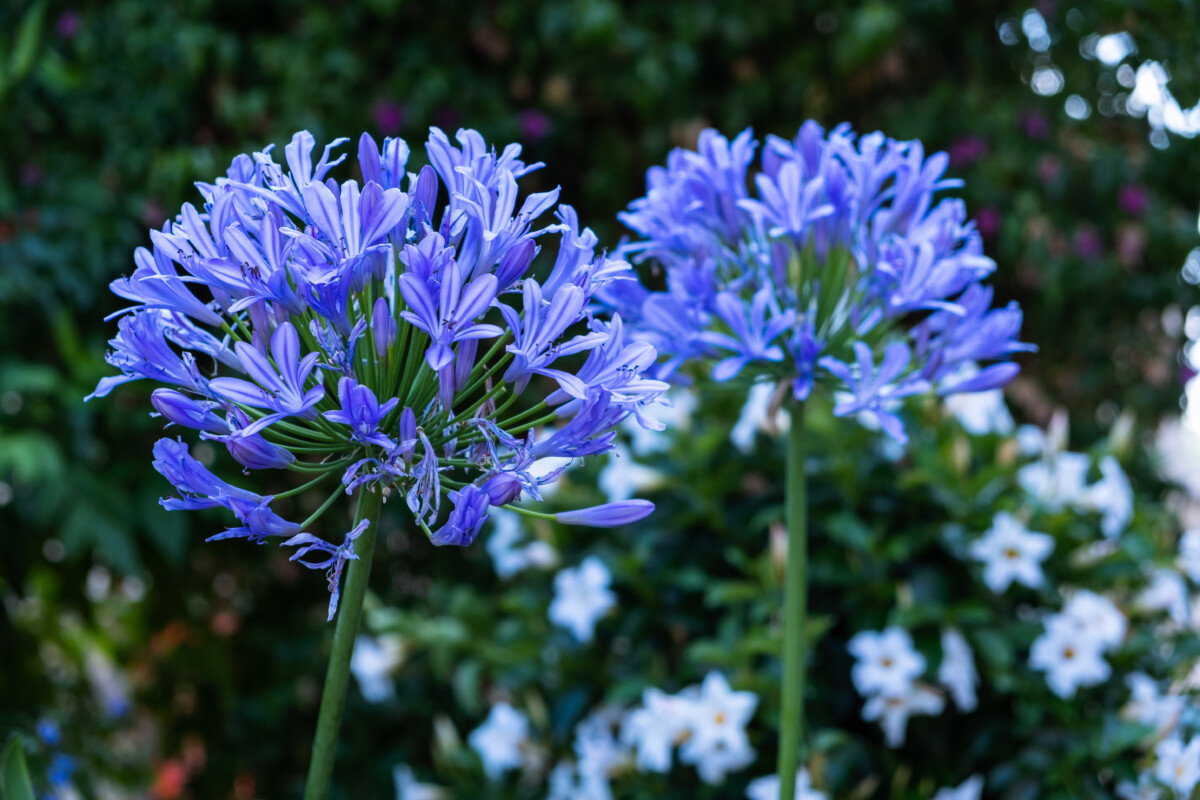
After a well-deserved summer vacation, most people generally come back home with a few souvenirs; or maybe sporting a nice golden tan; or, as is the case of my husband, a new recipe to try to replicate at home. As a gardener, I come back from vacation with even more ideas of plants I want to grow in my backyard.
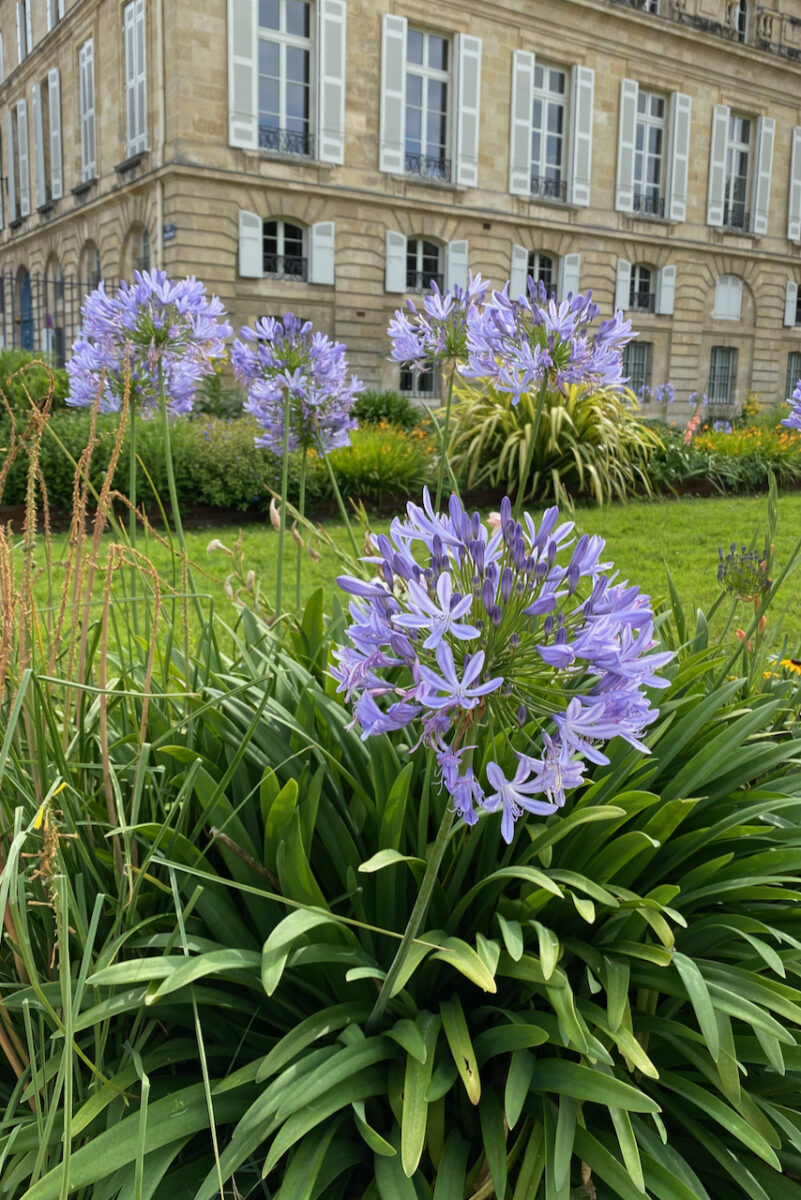
However, there’s an obvious glitch in this method of gathering inspiration. As we often vacation in places that are warmer and sunnier than where we live, most of the time the inspiration doesn’t go past the idea stage. There’s no way I could replicate a Mediterranean garden in my perpetually overcast city lot during the very short summer season we do get, if we’re lucky. Or at least this is what I tell myself in order to avoid the heartbreak of yet another dead plant.
But there are exceptions to this rule. And one of the plants that helped me break this bad spell was agapanthus (also known as lily of the Nile).
After three consecutive summers where it was a constant sight in gardens and city parks much further south, I decided to give it a try in my own garden. The rest, as they say, it’s history.
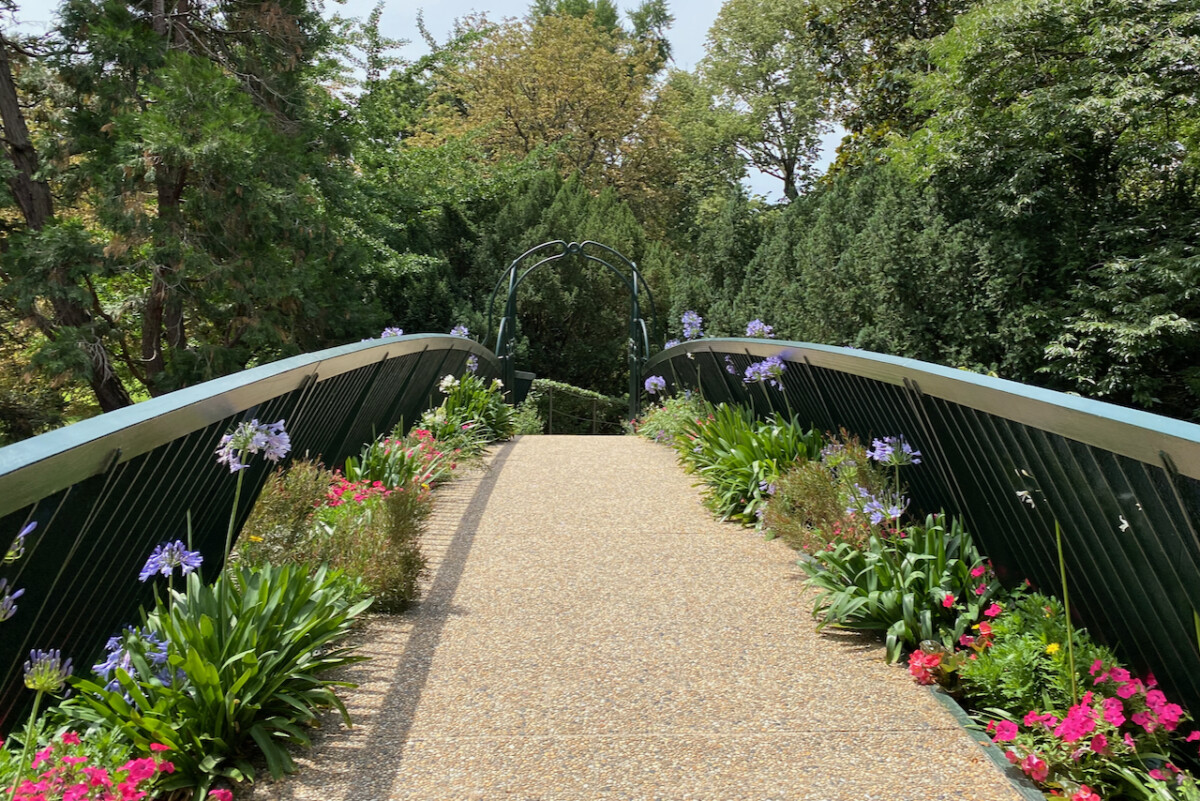
Far be it from me to tell you what you should make space for in your own piece of paradise (as I affectionately call gardens). But if you have a few minutes, let me tell you a few things about agapanthus that may or may not convince you to plant some this spring. (I think it will.)
1. Agapanthus is another name for Lily of the Nile.
A rose by any other name is still a rose, right? Well, agapanthus goes by a few other names. You may know it as lily of the Nile (despite not originating from anywhere near the Nile basin), African lily (despite not being in the lily family at all) or blue lily.
I prefer to use the name agapanthus. I think the word just rolls off the tongue and has a certain elegance to it. And if you’re a word geek, the etymology of the world is quite telling. In Ancient Greek, agape is one of the words used to express love (the familial kind) while anthos is the word for flowers, especially wild flowers. So for the love of flowers, get yourself an agapanthus.
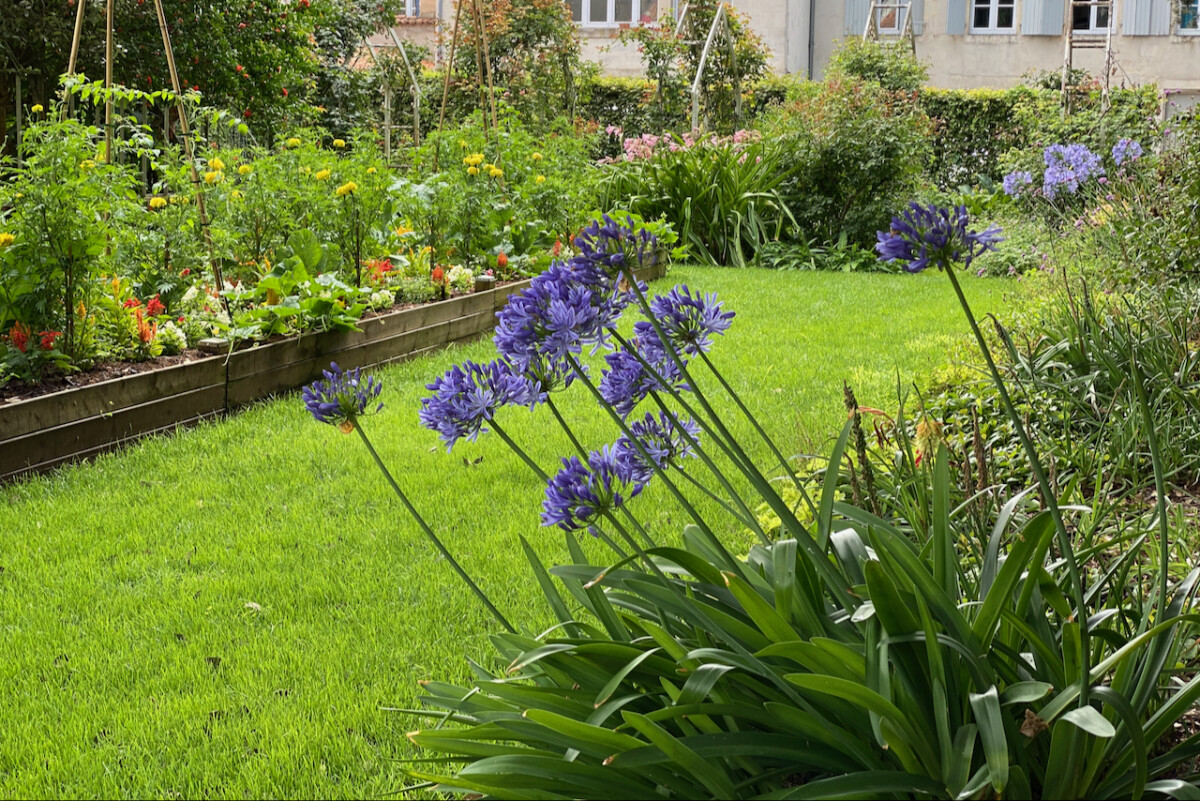
Moving on from Greek to Latin, you may also find this plant as Agapanthus praecox, Agapanthus umbellatus or Agapanthus orientalis. You may even see it labeled as Agapanthus africanus, due to its South African passport. Although even when you see it as A. africanus, it’s still probably one of the three gardening varieties mentioned above. The real Agapanthus africanus is still the name of the one that grows in the wild.
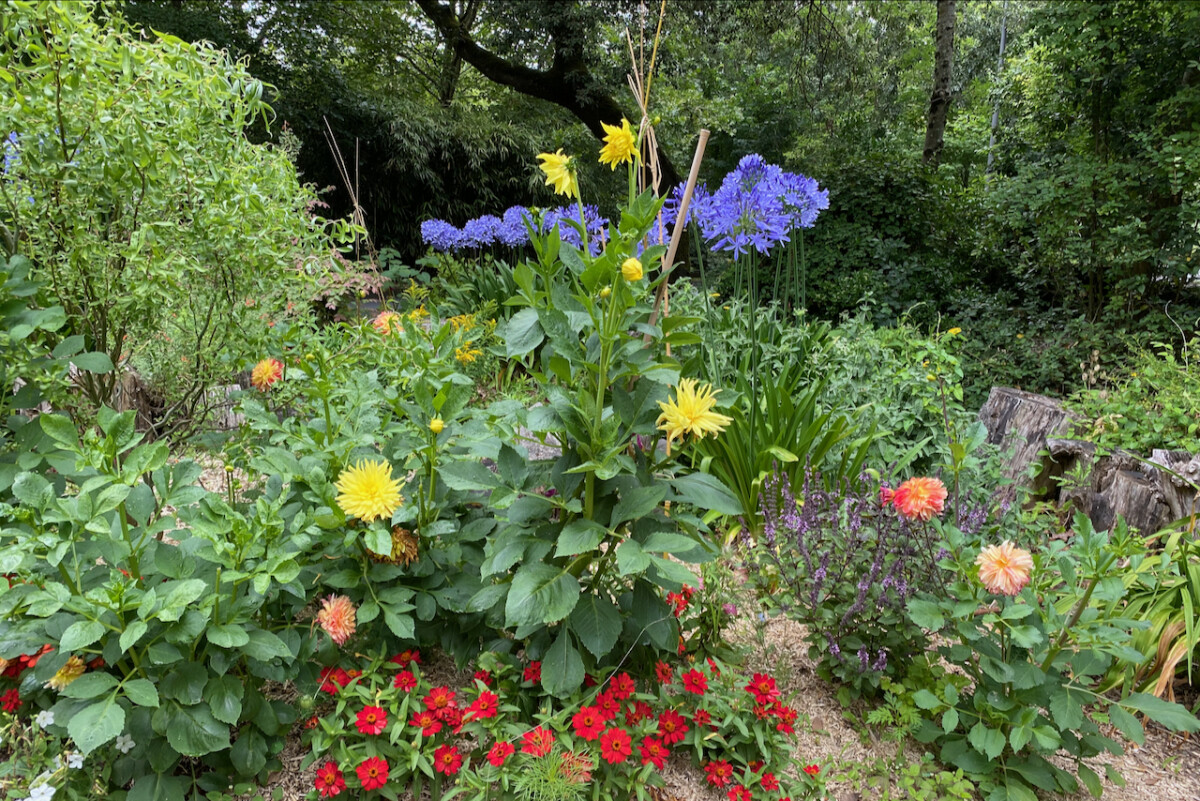
But the name is not what’s at stake here. Whatever you want to call it, you’ll find that agapanthus goes well in any garden layout. Its tall cluster of flowers (called an umbel) makes a striking addition to any flower bed or border from June through August; and depending on what cultivar you’re growing, each umbel may have from forty up to a hundred flowers.
In addition to the lovely flowers, the foliage is elegant and sturdy. And the bees and hummingbirds will be buzzing around your agapanthus all summer long.
2. You can start agapanthus from bare roots.
The easiest way to get some agapanthus into your garden is to buy them as potted plants. However, that’s by far the most expensive method. You might also read that you can start agapanthus from seed. But what this piece of gardening advice forgets to mention is that it will take years for an African lily started from seed to produce flowers. Why wait so long to enjoy blooms?
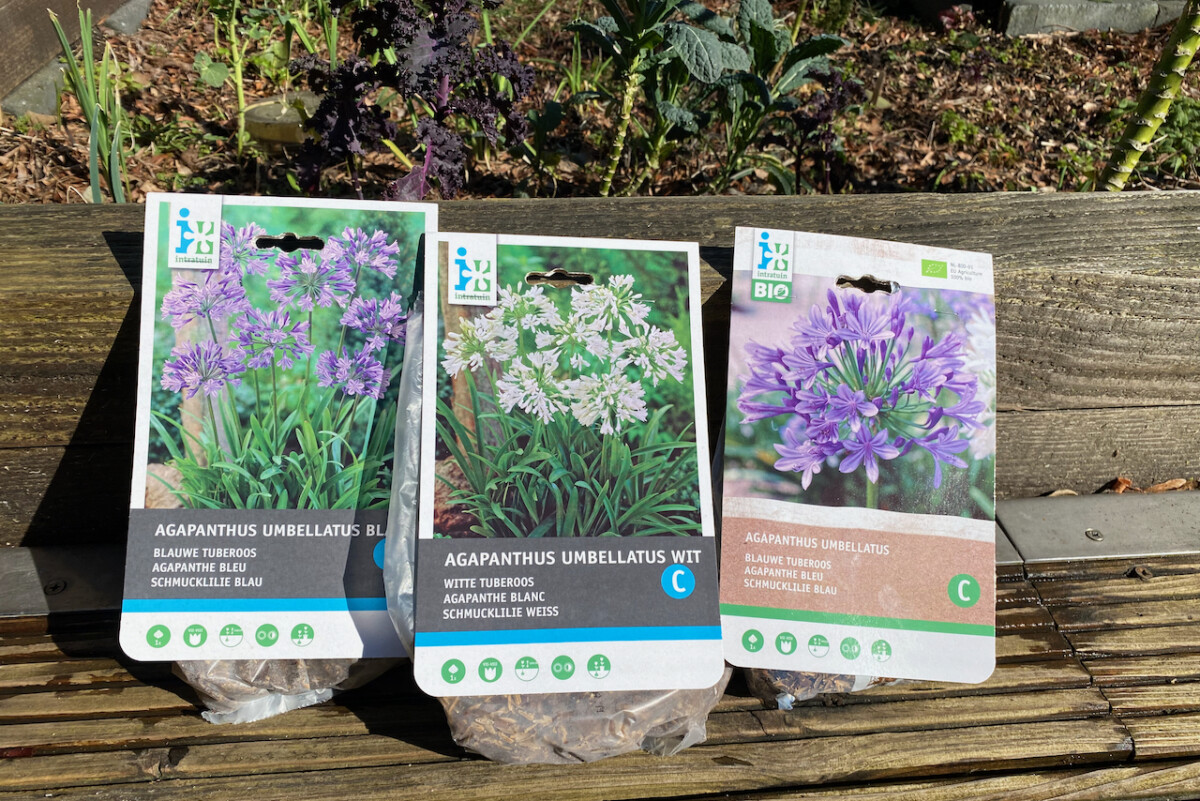
The middle ground, that is both affordable and brings a certain amount of instant gratification, is to start your agapanthus from bare roots.
Last fall, I wrote an entire article about the advantages of bare root planting. It’s cheap, it’s more eco-friendly and it has a high success rate. But if you’re planting agapanthus, make sure you wait until spring to do it. Agapanthus is a tender herbaceous plant that grows from fleshy elongated rhizomes. And these rhizomes won’t establish well in below-freezing temperatures.
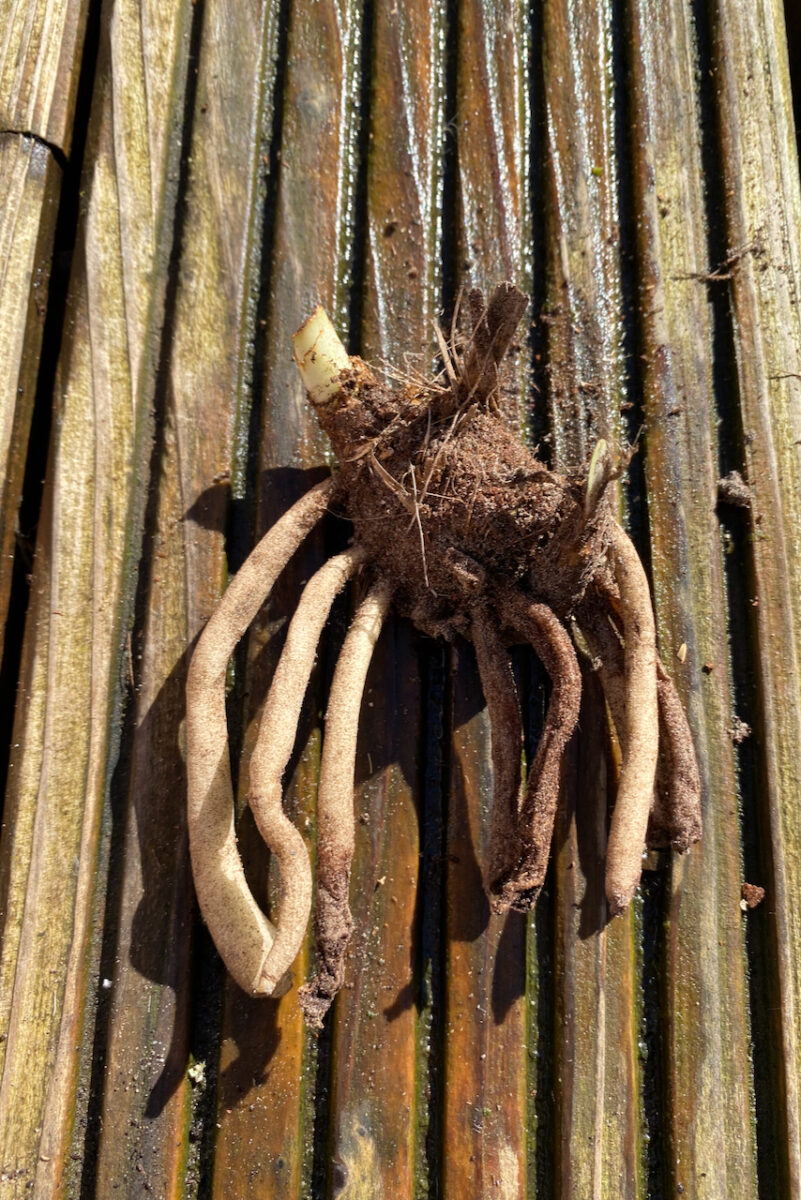
3. You can start agapanthus indoors in pots.
I mentioned above that I have a rather short growing season, at least compared to the sunny climates where agapanthus originates from. So to get around this limitation, I like to start my agapanthus indoors a good month (or even six weeks) before I transfer it outside to my garden beds.
This year, I started my agapanthus in mid-March, right after I was done with potting up my dahlia tubers.
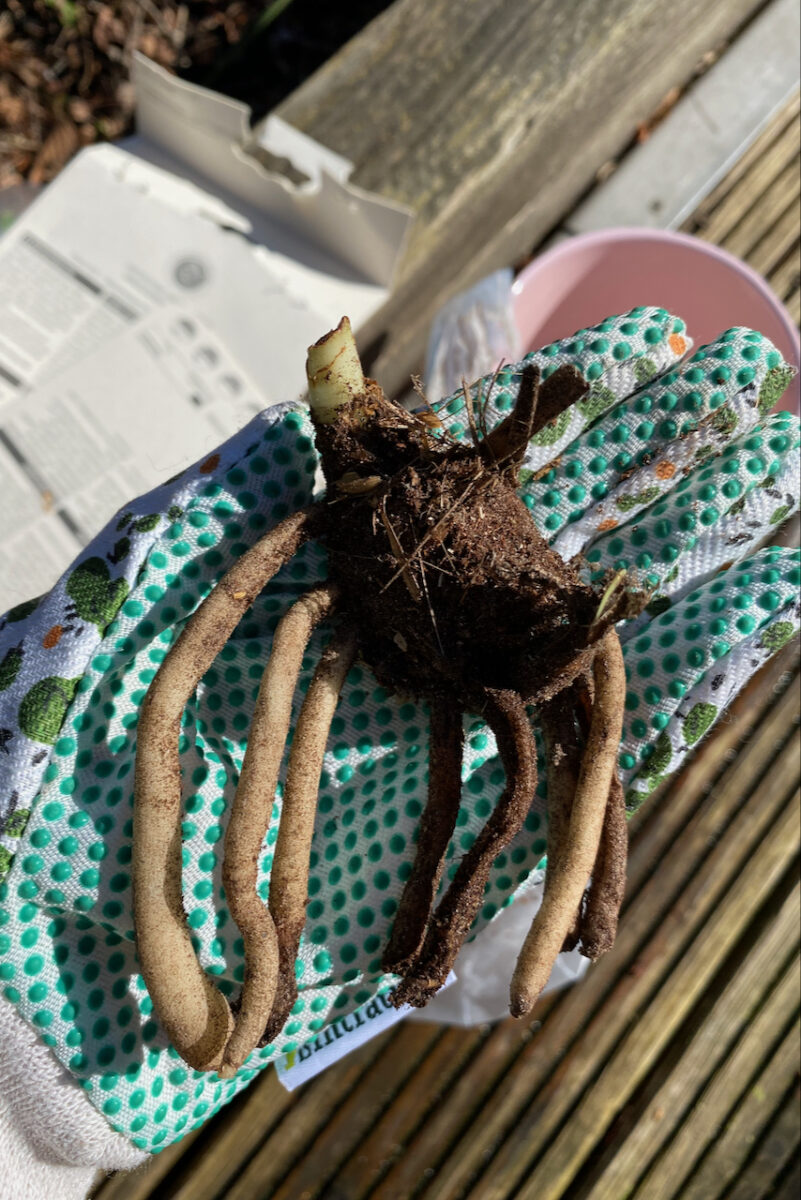
You can crowd your agapanthus a bit.
My gardening taste runs a bit on the messy cottage garden side, so I think that the African lily looks particularly stunning when it’s planted in clumps or drifts. Now I don’t have room for masses of flowers in my backyard, but I can accommodate a small grouping.
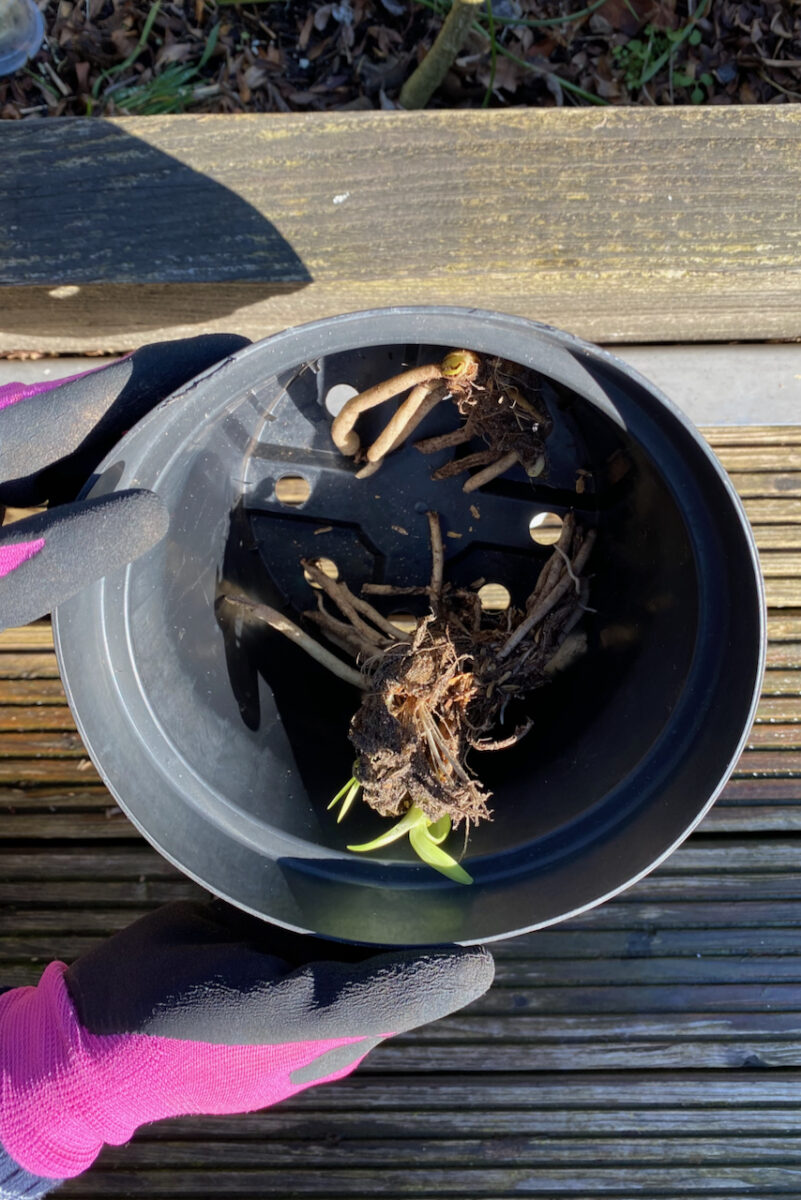
So I’m combining two agapanthus roots in the same pot (a white one and a purple one) and keeping the third plant (a slightly taller cultivar) in a separate container.
Plant with the young sprouts facing up.
Since planting agapanthus is a spring job, you’ll see that most of the bare roots have already started sprouting. Each rhizome sends out several shoots, so chances are there are at least a few hints as to which side you should plant up.
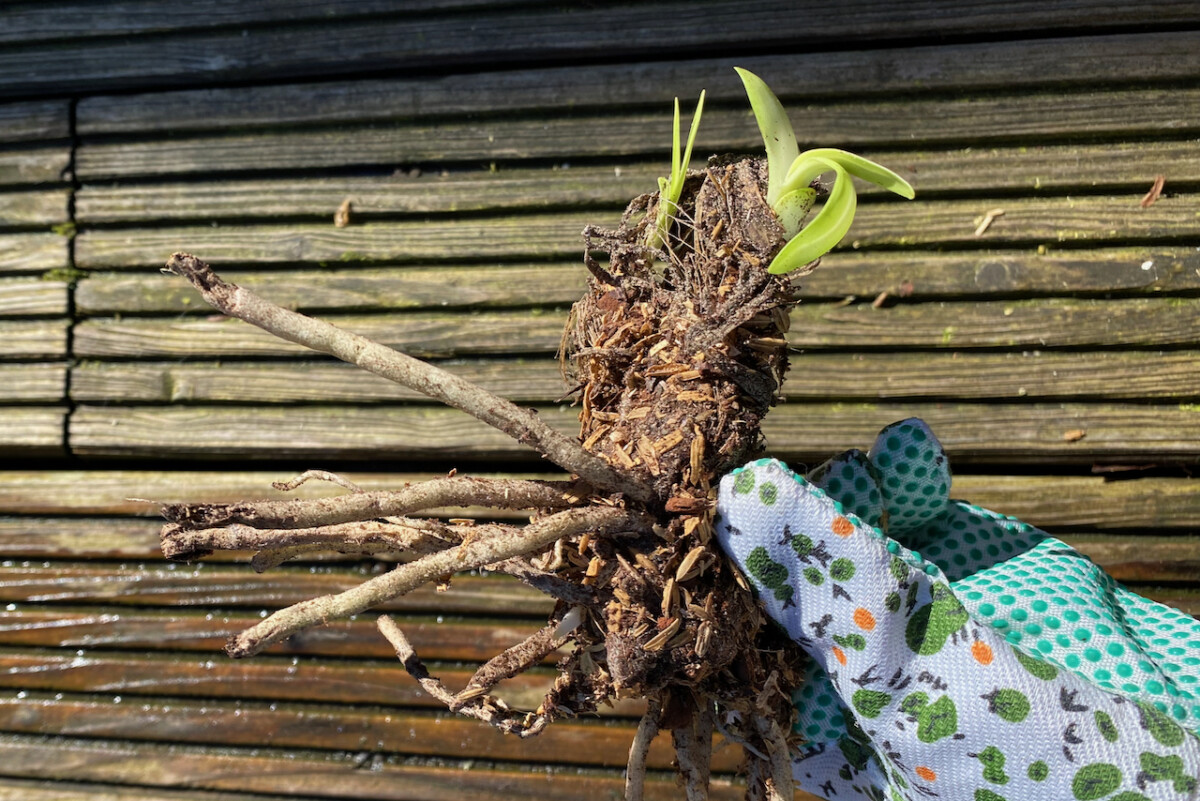
The young shoots are more visible on some plants than on others. Do your best to identify the new growth. But if you’re planting straight in the garden, the plant will find its way up eventually.
Agapanthus is not a big fan of staying too soggy, so make sure you start the rhizomes in some well-draining potting soil.
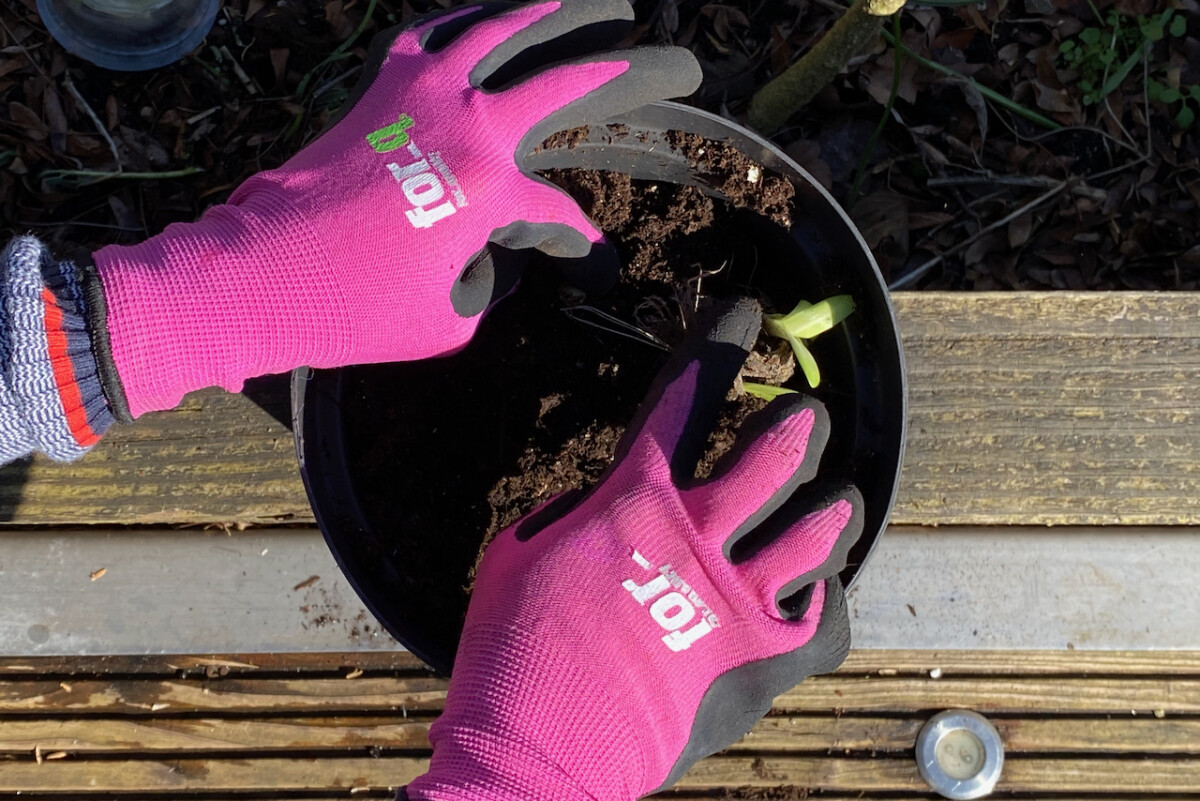
However, as is the case for any bulb, rhizome or tuber, the plant does need a bit of moisture around the roots in order to jumpstart the growing process for the season. End your potting session by watering evenly and allowing the water to drain before you bring the pot back indoors.
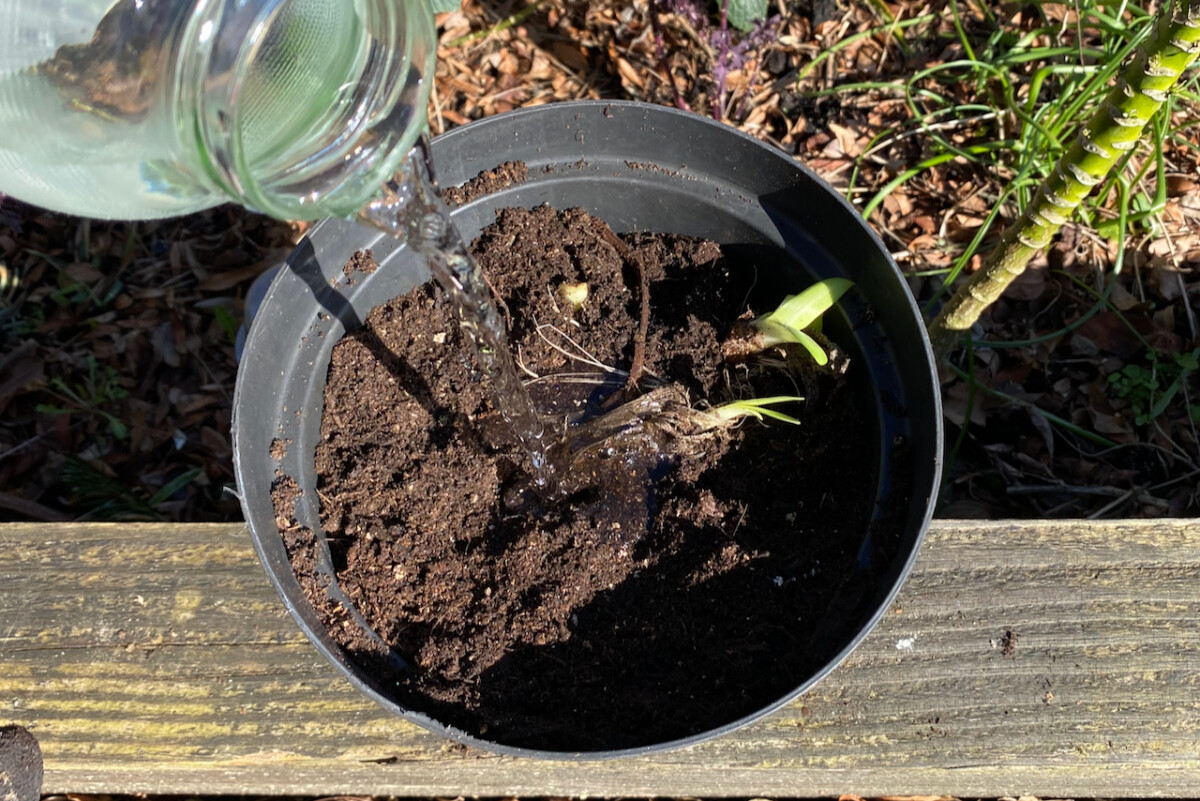
While the plant is still in its infancy, I check the pot about once a week to see if it’s moist enough. So far, I’ve only had to water it about once a week. But once the African lily starts growing faster, as the days get warmer and longer, I’ll gradually start giving it a bit more water.
Agapanthus is slow to start.
It takes a bit for agapanthus to show signs of growth. Here it is, about three weeks after I planted it. As I mentioned above, every rhizome may send out several shoots, and it looks like two bare roots have turned into three plants, with a couple more still growing surreptitiously below the surface.
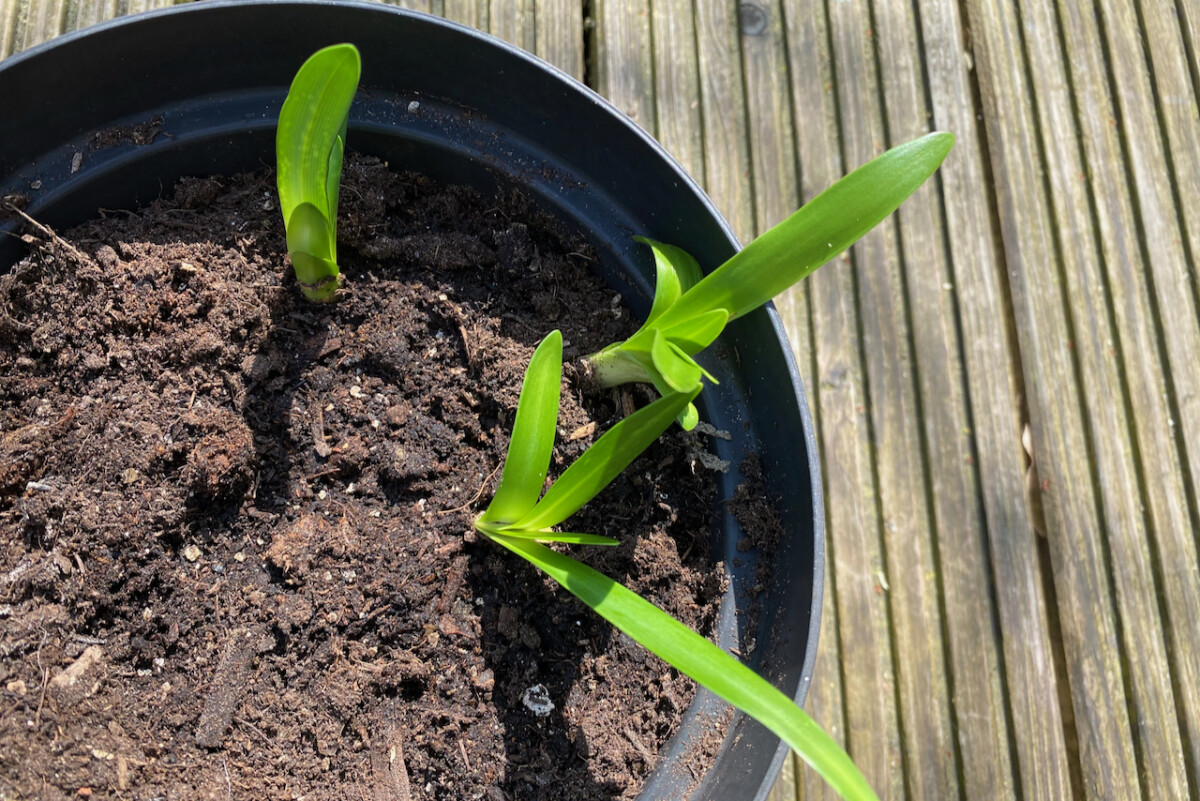
I will keep this pot indoors until early May when the danger of overnight frost has passed. If you’re starting your agapanthus in pots, make sure you keep it under cover in a warm location such as a greenhouse or a conservatory. Even a garage will do, as long as the plant is getting some light in spring.
4. Agapanthus is very tolerant of different soil conditions.
How am I doing with convincing you to plant some lily of the Nile in your garden? Still a skeptic? Let me give you another reason to do it.
Once established, agapanthus will tolerate very different types of soil conditions. Naturally, it does well in soil that drains well (like most rhizomes, it will rot in perpetually wet soils). However, it will also happily grow in sandy, loamy or clay soil, and even in soil that’s not particularly nutrient-rich. It will tolerate both alkaline as well as acidic soil. How’s that for a trooper?
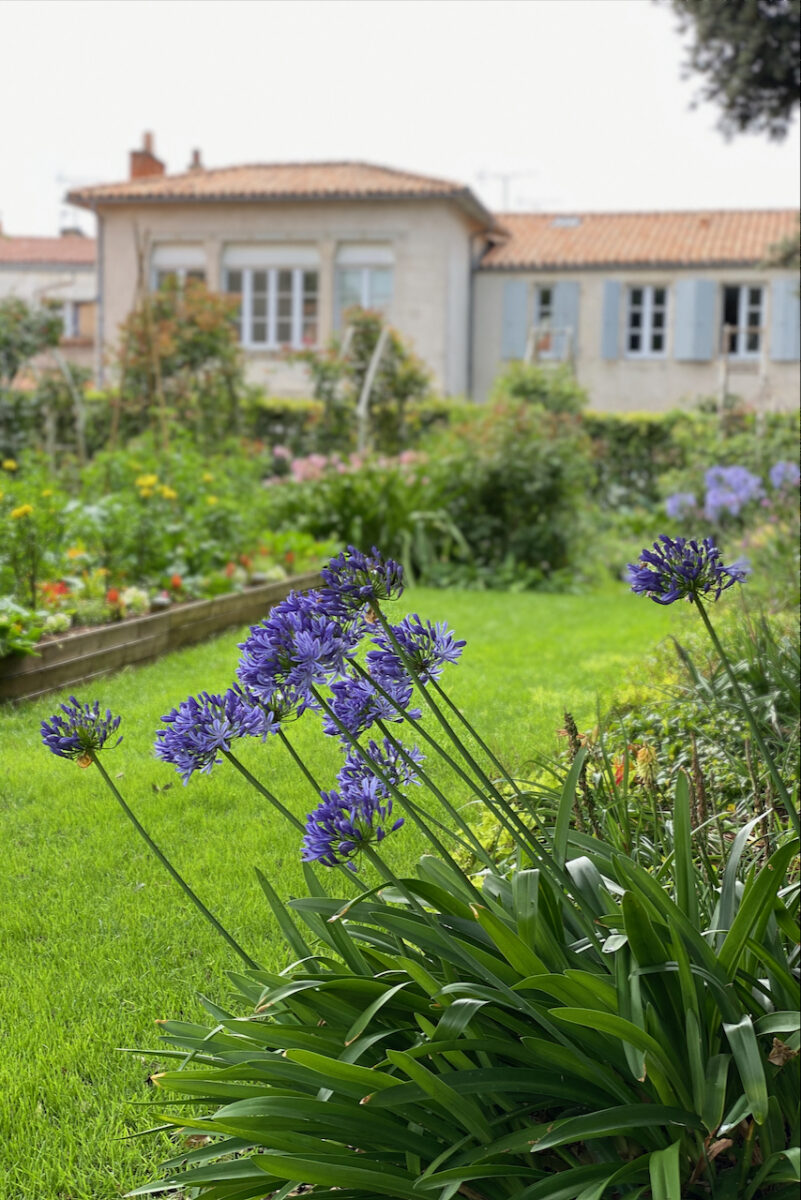
Of course, you should do your best to prepare the soil before transplant by adding some organic matter, in order to improve drainage and soil aeration; but there’s no need to fuss too much over this plant.
If you want to get as many blooms as possible, transplant your agapanthus to a spot that gets full sun (about six hours a day). But you’ll still get blooms and an abundance of lance-shaped sturdy foliage if you only have a part-shade bed to work with.
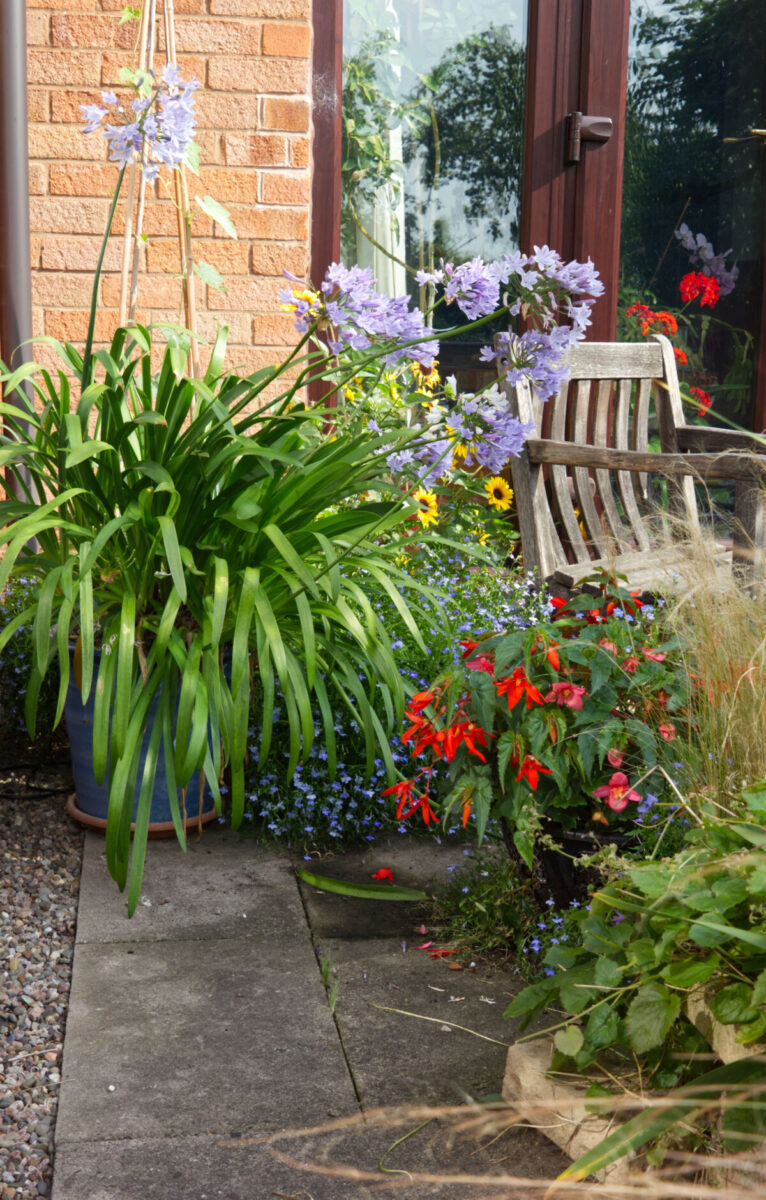
Agapanthus may need a bit more water while it’s still growing. But once it’s established, it turns into a drought-tolerant workhorse. It reaches peak bloom after two or three years, so don’t panic if it’s not full of flowers in its first summer season.
5. Agapanthus can be deciduous or evergreen.
Ok, this was a new one even for me when I first started researching how to care for agapanthus before I planted it in my garden. Now if you’re in a gardening zone that doesn’t get a proper winter, your agapanthus may stay leafy all year long. But that’s not always the case. And it’s not always a good sign.
Deciduous agapanthus has thinner leaves that die back naturally once the fall season draws to an end. The plant retreats underground to overwinter and will emerge again in the spring sprouting new foliage; in this respect, it behaves very much like a regular perennial.
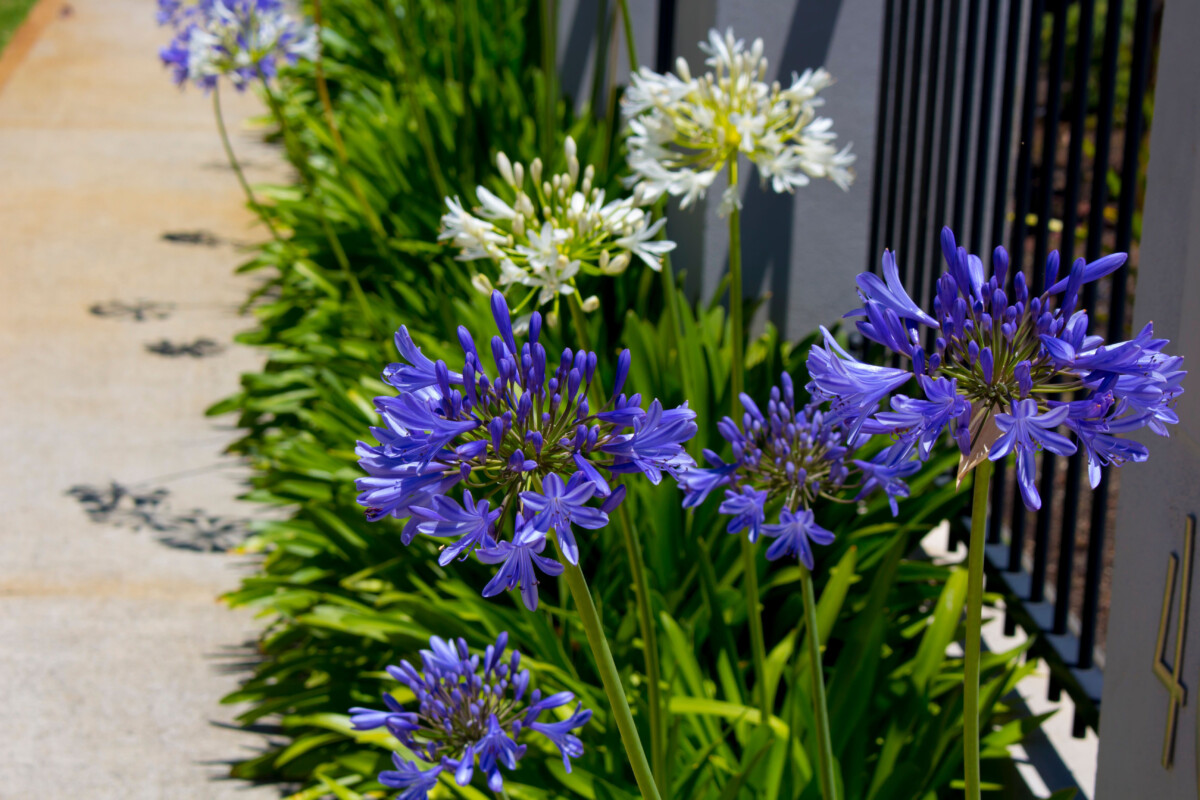
Evergreen agapanthus generally has wider leaves (though not always). It will keep its leaves on throughout the winter months, as long as you place it in frost-free sheltered space.
Knowing which one you’ve got is not always so straightforward. If you’re buying new agapanthus, the plant label should specify this information. On the other hand, if you’ve inherited a new-to-you garden or if you’ve adopted an agapanthus from a gardening friend, the best way is to wait and see. In the fall, pay close attention to your agapanthus.
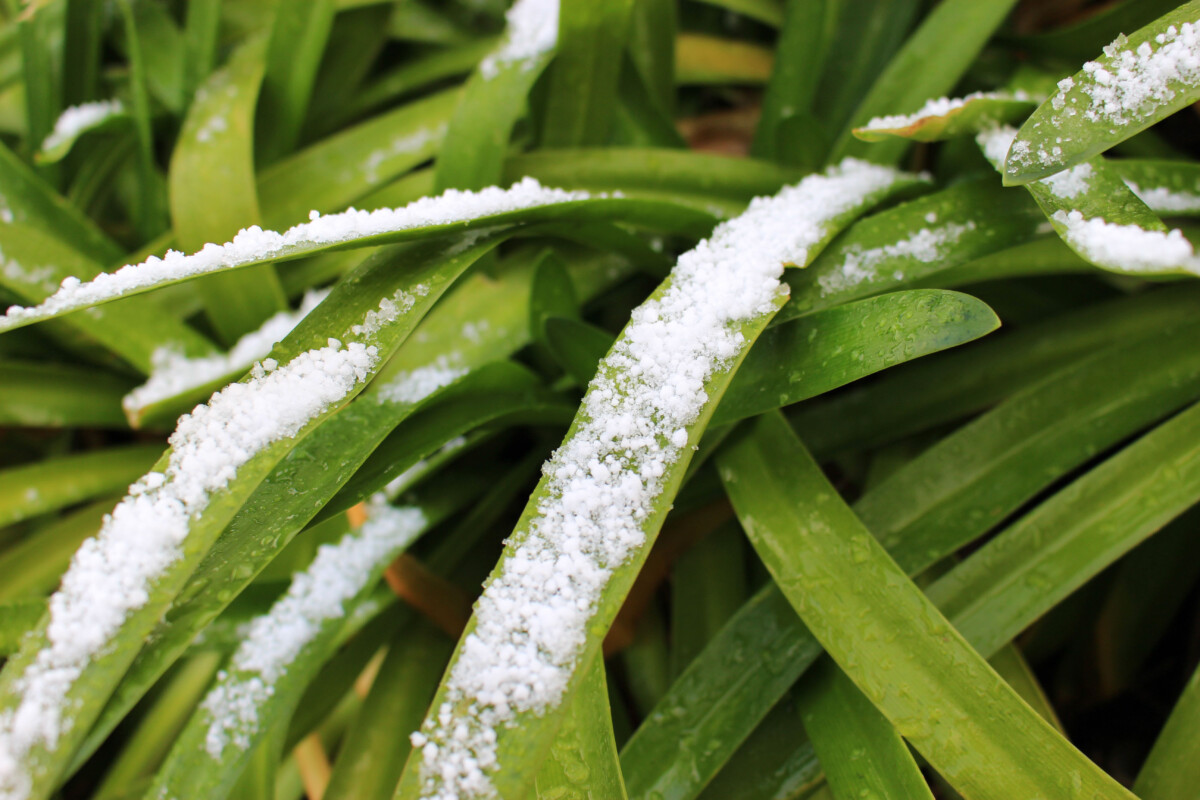
Do all the leaves dry out with not much left above ground? Then you have a deciduous variety.
Does your African lily keep most of its leaves? Then it’s an evergreen variety. It’s worth mentioning that even the evergreen varieties will lose some of their foliage, especially the older leaves growing on the edges. That doesn’t mean it’s not evergreen, just that it’s shedding some dead weight.
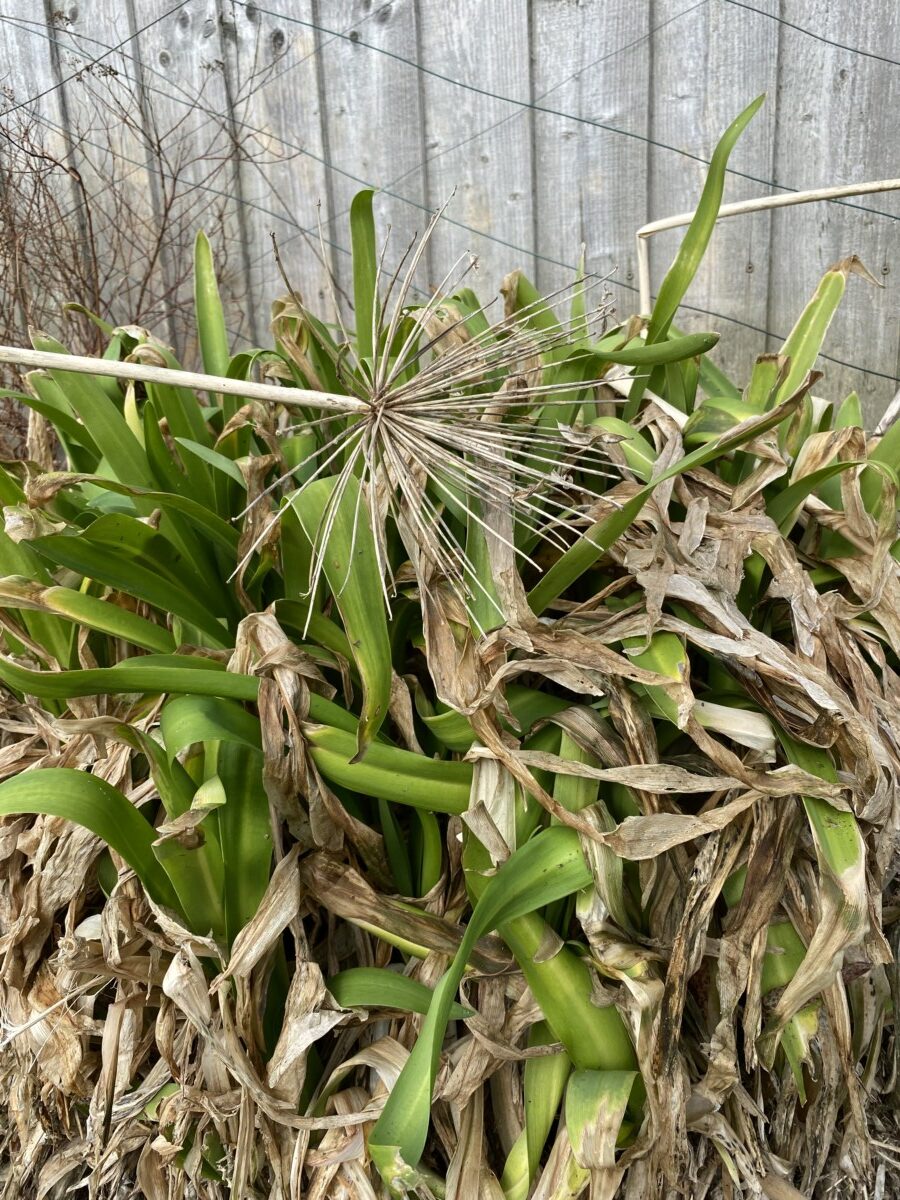
6. You can overwinter your agapanthus.
Just in case the evergreen option sounds more appealing, you should know that it’s the deciduous one that’s more winter hardy. In any case, if you’re gardening in a zone that gets harsh winters with below-freezing temperatures, you should overwinter your agapanthus indoors (much as you would dahlias).
If you’re growing agapanthus in containers, simply bring the containers to a sheltered location where the temperatures won’t drop below freezing. Both the deciduous agapanthus and the evergreen one will enter a season of dormancy, so there’s no need to water them too much during the winter.
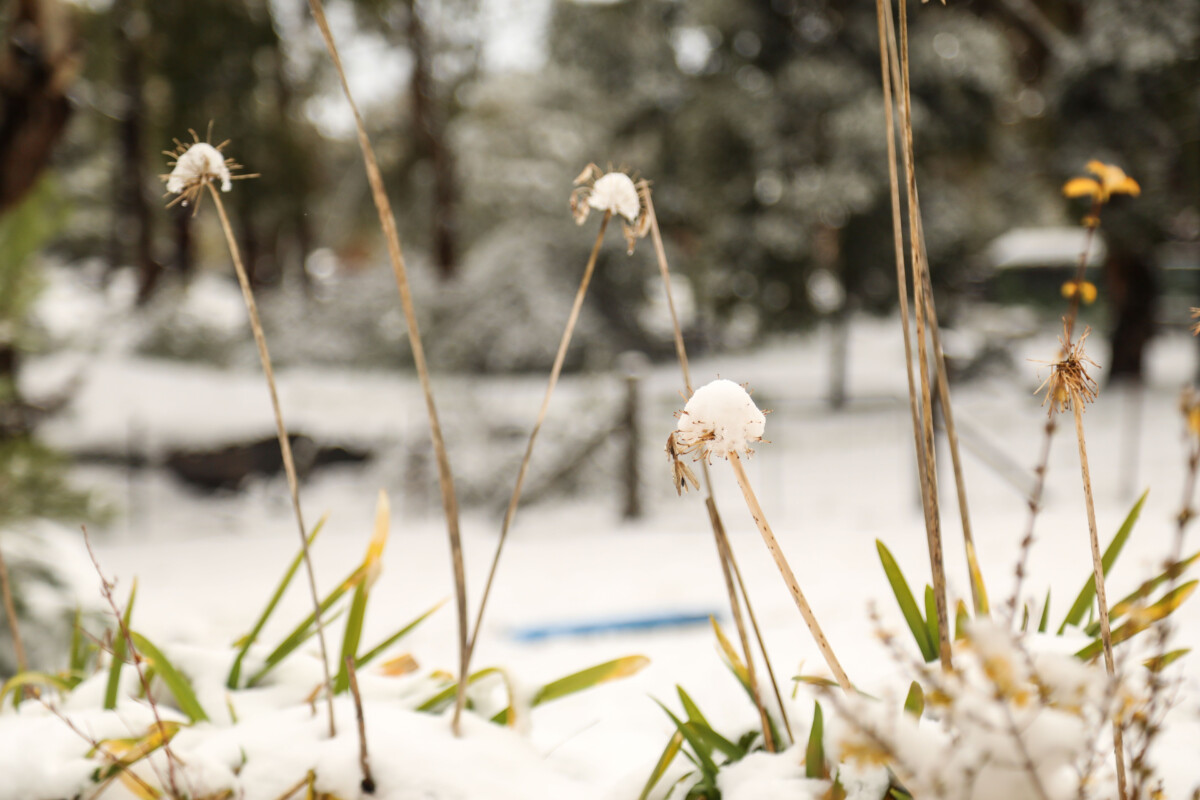
If bringing your African lily indoors is not possible, you can use a couple of layers of protection from the cold spell. Start by adding a layer of mulch on top of the roots and the crown, then cover it with a sturdy horticultural fleece. A layer of burlap topped up with some evergreen branch clippings is another strategy for overwintering this plant in place.
7. You can grow agapanthus in containers.
Mature agapanthus, like the ones I had set my sights on when I was traveling, look quite intimidating for those of us who garden in small spaces. But there are agapanthus cultivars that are suitable for small spaces and will grow really well in containers. Smaller varieties of agapanthus include:
- ‘Lilliput’
- ‘Baby Blue’
- ‘Peter Pan’
- ‘Nanus’
- ‘Streamline’
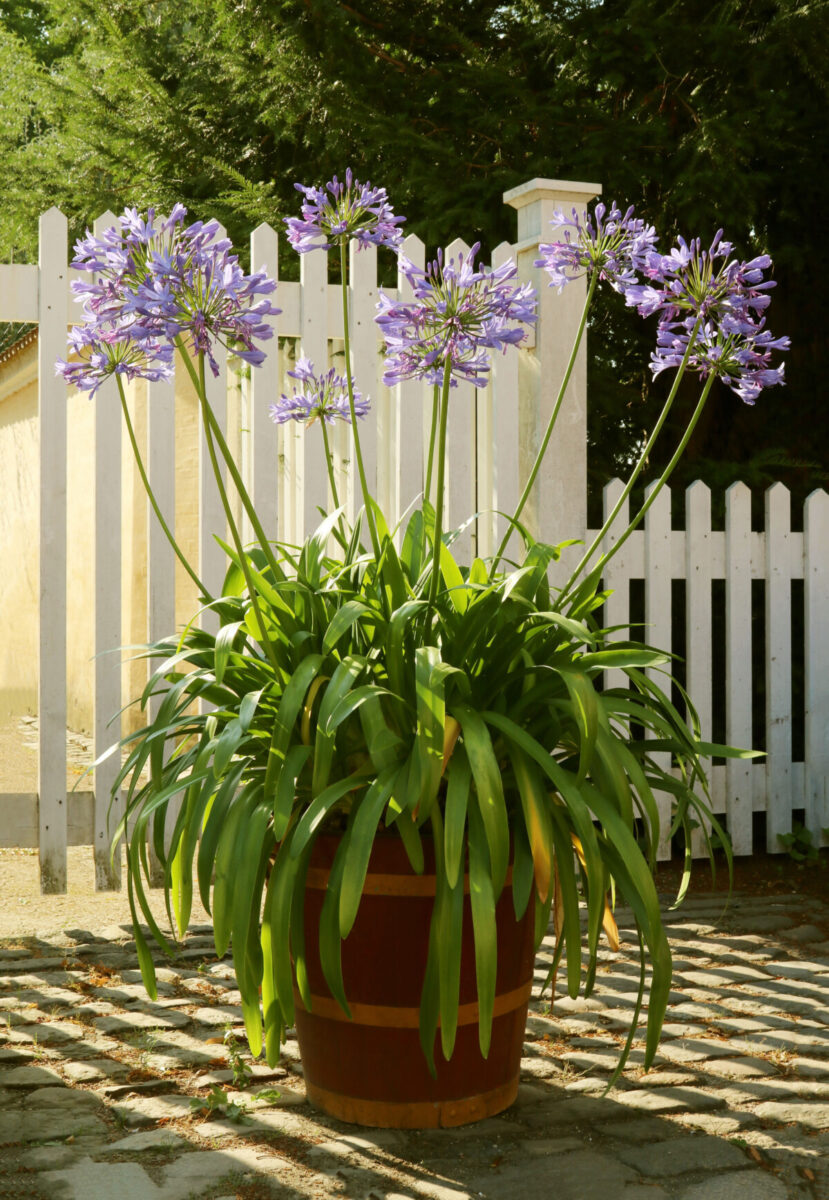
When you grow lily of the Nile in containers, always choose a pot that has drainage holes. Yes, I know this should be obvious by now. But after seeing so many gorgeous patio containers at my local gardening center that are completely sealed up and have no way to let the water drain out, I feel it’s my duty to remind you of this container gardening prerequisite.
You can start with a 12-inch pot (about 30 cm) during the first couple of summers, then graduate to a larger container after that. I know, all too well, the temptation to take a shortcut and plant directly in a large container.
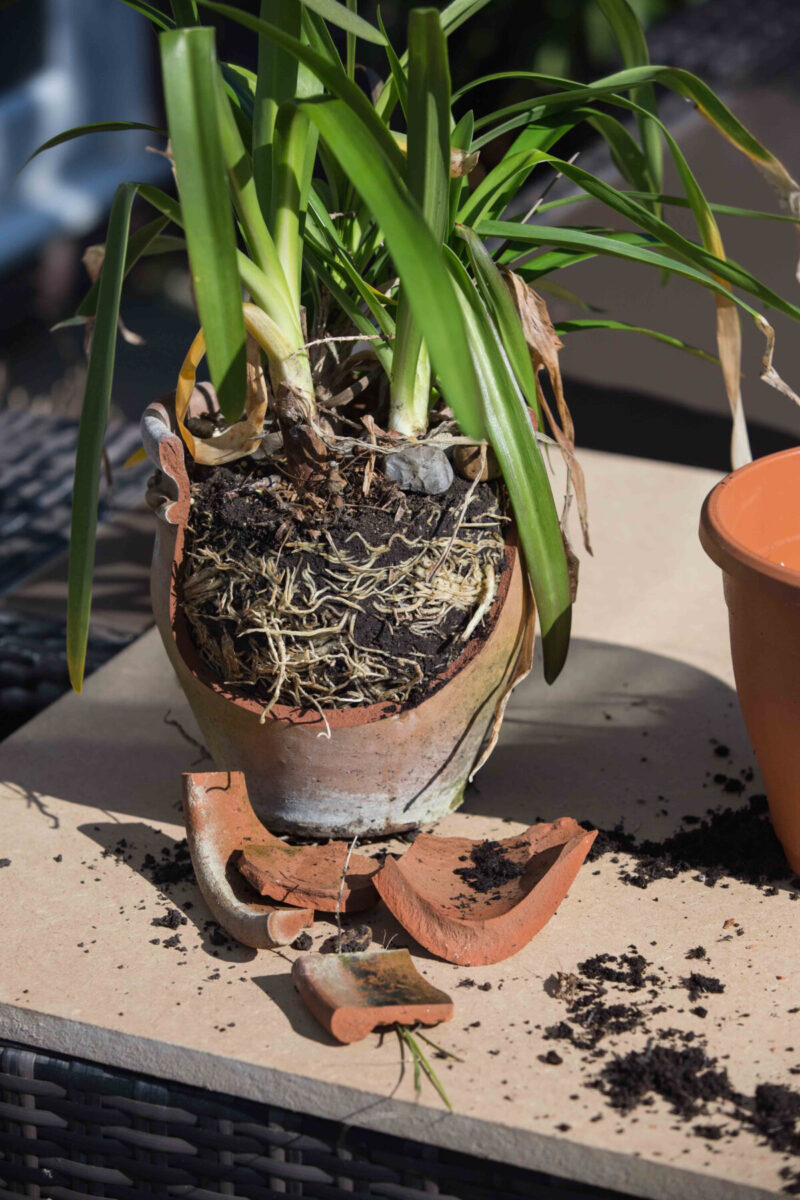
But unless you’re combining your agapanthus with other plants, start with a smaller pot. Another advantage of this plan is that slightly restricting the roots will result in more blooms. Up to a point though, so don’t let it get too overcrowded. An overcrowded agapanthus will pull a very convincing act and escape out of its pot like a 90s celebrity magician.
Even though African lilies are generally drought-tolerant, if you plant them in a container, you should make sure you water them enough in the spring and summer. They may even need a daily soak in the summer if you’re not getting enough rain.
8. You only need to buy agapanthus once, then keep dividing it.
I’ve already mentioned that African lilies may take a couple of years to get established in a landscape and reach their blooming potential. But once established, it will take a few years before they start getting crowded. The agapanthus rhizomes, like any bulbs that are well-tended, will reproduce underground.
So after a few years (anywhere from three to five, depending on the climate you’re gardening in), you’ll have to dig it out and divide it. Since agapanthus is a fairly tender perennial, save the division job for after the plant is done flowering (at the end of summer) or for the following spring.
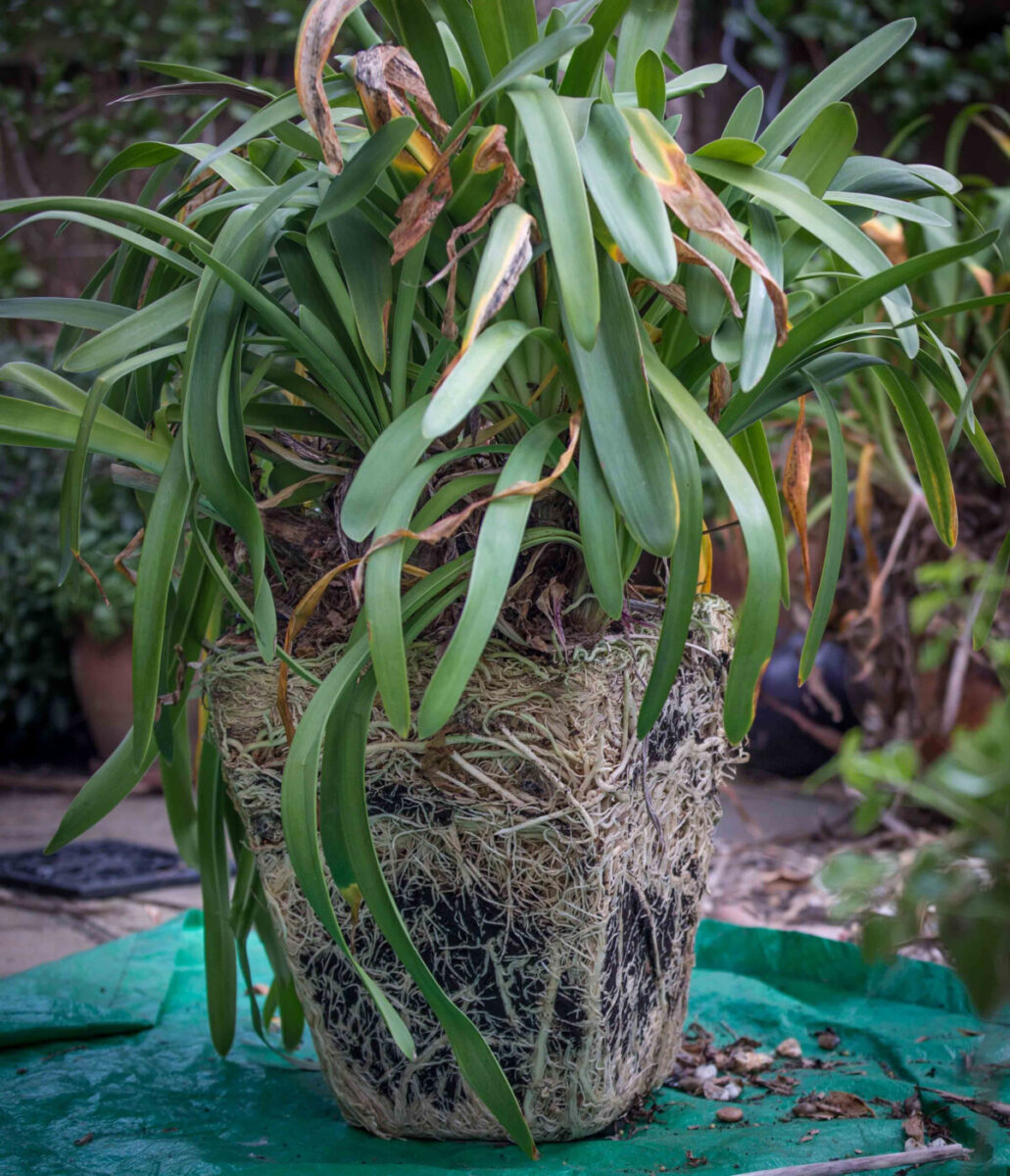
Doing the division in the fall will stress the plant unnecessarily before the onset of the cold season. Keep in mind that some of the small baby plants that you’ll get after division may not flower during their first year. That’s totally normal and expected.
Some people report mild allergic reactions to agapanthus sap, so make sure you wear the proper protection gear (gardening gloves and long sleeves) when you divide the roots and the rhizomes.
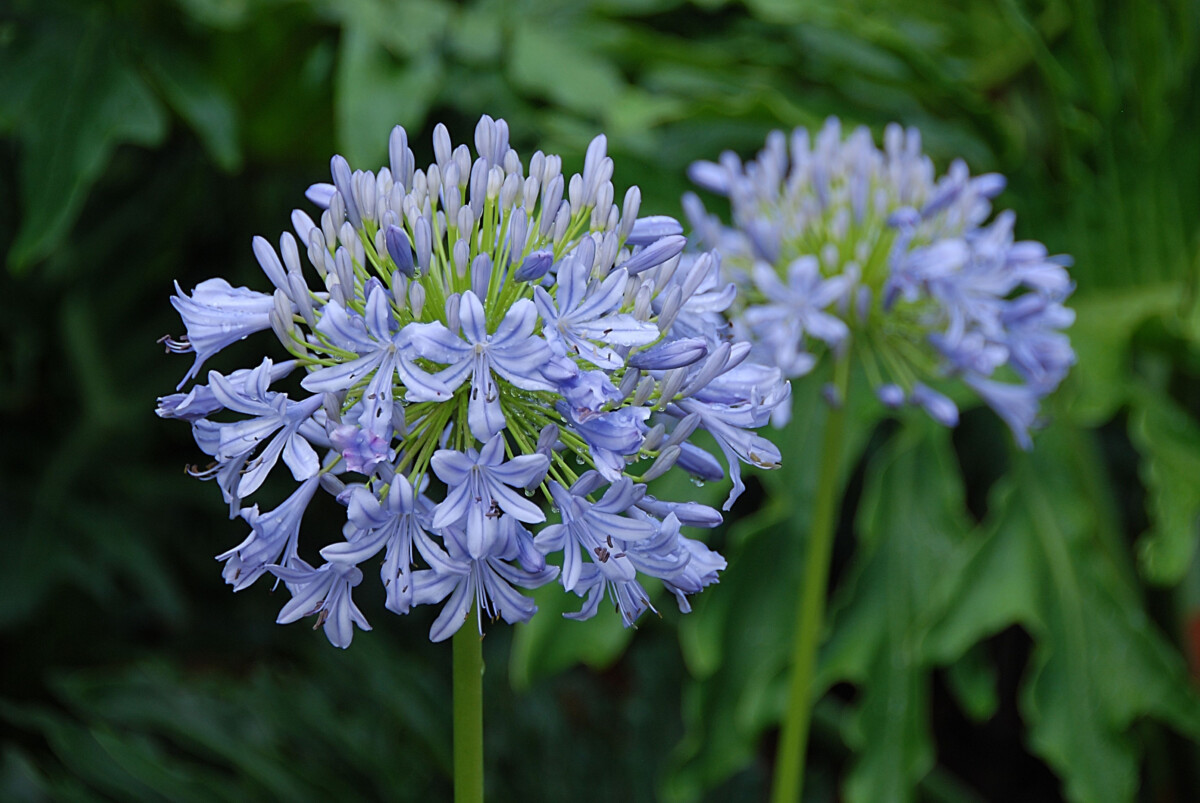
If you’ve made it to the end of the article, I think it’s safe to say you can see right through me by now. Under the guise of casually offering some agapanthus trivia, I was surreptitiously trying to convince you to plant some agapanthus in your own garden. If it worked, I’d be so happy. And you’ll be just as happy too, come July.
